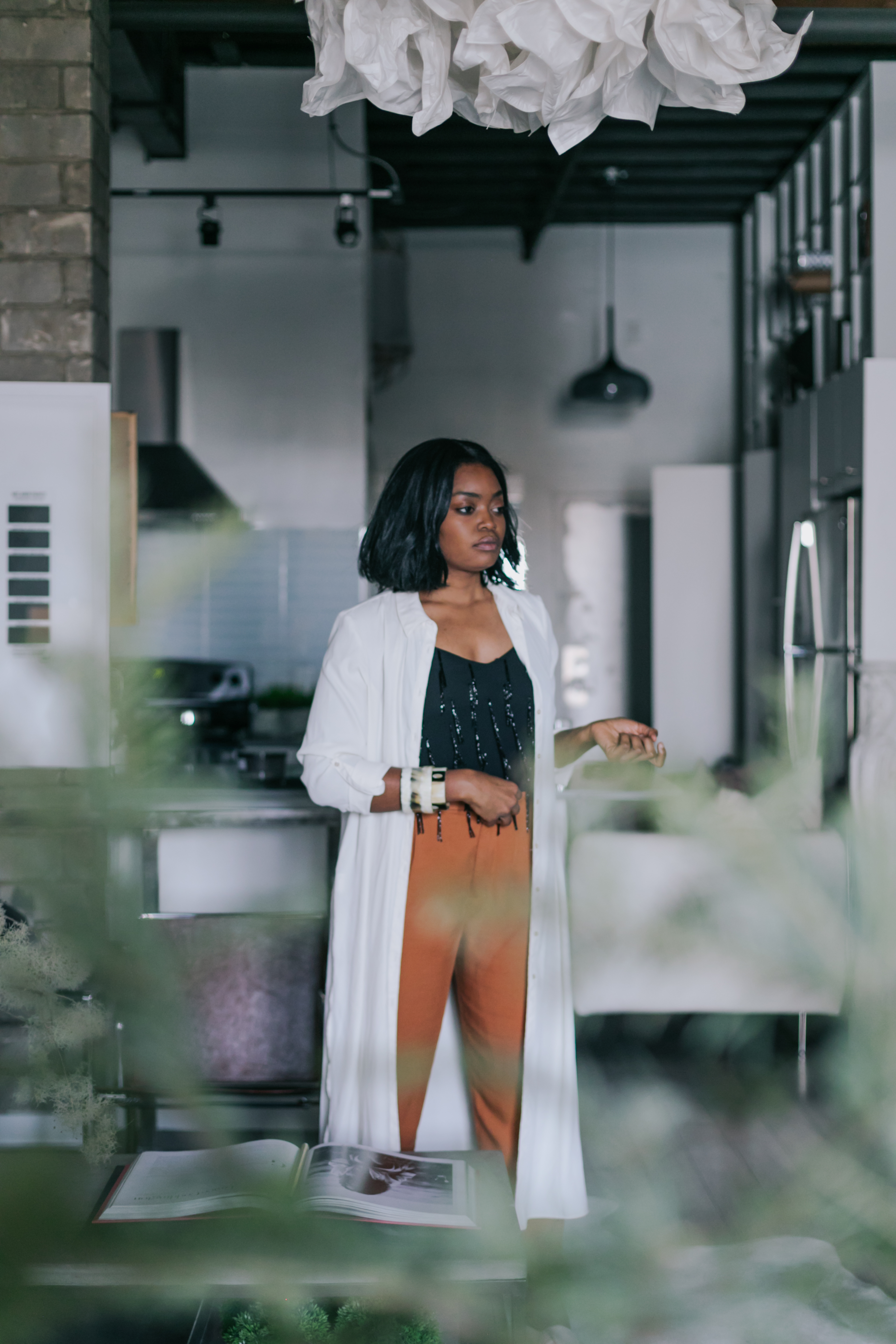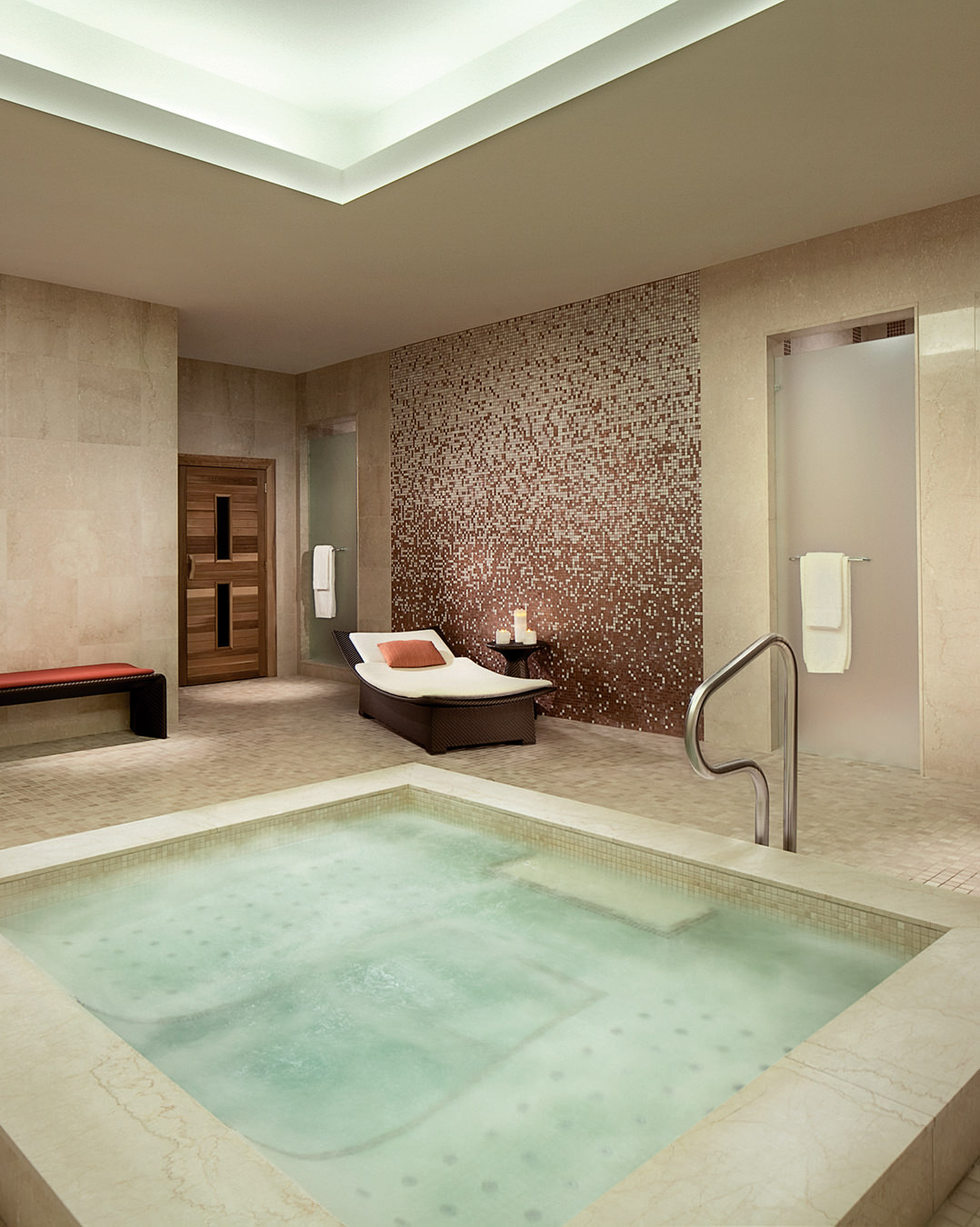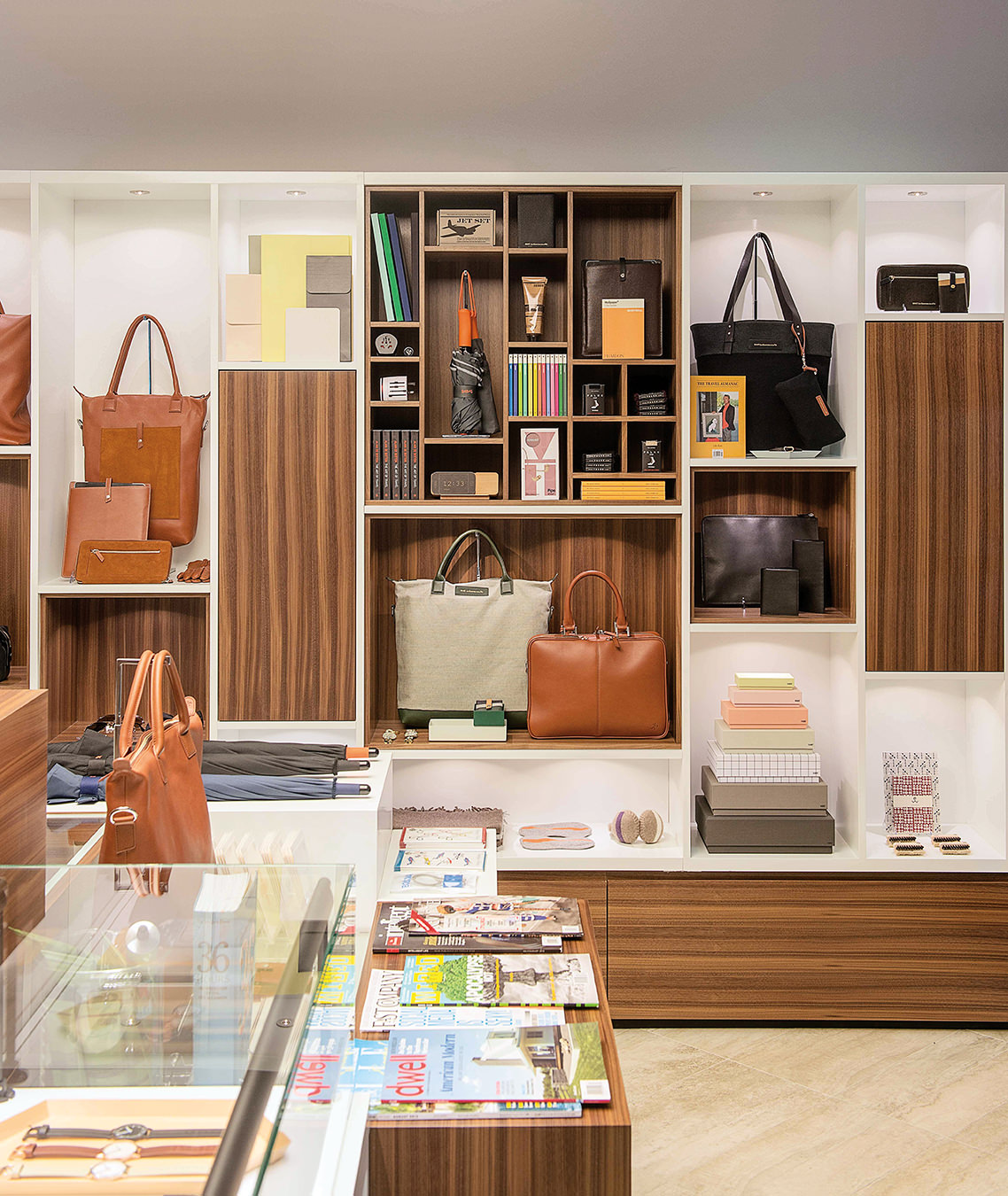In Conversation with Nike Onile of 800 SQ FT
The designer speaks to creating space where there is none.

Much of design is concerned with the idea of space and how we live in it. As Toronto becomes a city more concerned with building up as opposed to out, large living space is becoming a rare commodity. Designer Nike Onile specializes in the idea of creating the illusion of greater space through the Apt by 800 SQ FT, the shoppable apartment from her design studio, 800 SQ FT. The one-time biotechnology student and Munge Leung (now Studio Munge) employee—now regular design expert on daytime television—has become a go-to face for design conscious urban dwellers striving for a grand aesthetic for minimal square footage. In fact, the name of her studio is inspired by the size of her first condo. We spoke to Onile about how she made the switch from biotech to designer, overcoming imposter syndrome, the visibility of black designers, and her success in creating space where there is none.
You were educated as a scientist in the pharmaceutical industry, and then somehow ended up diving head first into the realm of design. How and why did you find yourself making this leap?
At my core I am an artist. Following an academic career in the sciences was a path I followed to fulfill the desires of my parents. I come from a traditional Nigerian family and, like many non-North American countries, there is such high value placed on “the honorable three”: doctor, lawyer, engineer. I researched the most artistic specialization in medicine and decided I was going to be a plastic surgeon. Thus began my journey on the road of life science. Years later, I found myself working as a regulatory affairs professional at a natural products consulting firm feeling deeply unfulfilled and with a knowing that this could not be it. I remember the specific morning I looked at myself in the mirror as I was getting ready for work, feeling dread. What came to mind was a quote I had heard the day before from Steve Jobs: “If today were the last day of my life, would I want to do what I am about to do today? Whenever the answer has been no for too many days in a row, I know I need to change something.” That was it. Those words rang very loudly and the rest is history.
Do you think your background in science in any way influences your design work?
Absolutely. The creative part just runs through my veins much like it does for an artist inspired by a muse. However, the analytical and strategic aspect of my science background has been instrumental in the way I run my design business.
You thought at one point you would like to be a plastic surgeon. How different is the idea of people having their bodies designed the way they want, from having their personal living space designed the way they want?
There is a fundamental difference between the relationship we have with our bodies and the relationship we have with our home. With our bodies we have a lifelong relationship of carrying it. With our home there is an ease we have in changing it if it no longer suits us. We can change its color, swap out its contents… heck, we can swap the house entirely if it no longer suits us. The thing is that since we live in our bodies, as we do our home, they both require us to know ourselves very well before we can feel comfortable in them, regardless of how we decide to manipulate them.

As a designer, how do you navigate the issue of small space without becoming too minimalist, or too cluttered?
The thing is, space is just space; it’s not the important part. Regardless of the size of the space, my starting point is always the same: the people who will have to call this space “home”. When you focus on people—how they live, what they love, and what makes them feel alive or comfortable—the rest just paints itself. Well, at least in my mind it does. When I first meet with a client, I spend very little time talking about design. I spend most of the time just getting to know them. I have them walk me through their home and if you watch closely, you can notice how they interact with their space. How they move closely and linger around the things they love. They smile and speak about it as they would a loved one. The way they turn their bodies away or wrinkle their foreheads as they quickly glide over things they hate. As they speak, I am mentally removing, adding, and rearranging their home. By the end of the tour, I have a pretty good idea how the space will feel when I’m done. Some people are not minimalist, so I don’t insert myself into their version of what home should feel like; I act as the translator. Through time spent with them, and equipped with an understanding of how they live and how they would like to feel in their home, I paint a picture: furniture, fabric, and art as my medium. Of course, there are tricks that influence our perception of how big a space feels, but all these are the tools I use once I’ve observed my muses.
Artists of all stripes and backgrounds have made mention of suffering from imposter syndrome. How does your identity as a black woman in a room full of people who don’t look like you—or maybe don’t share some of the same cultural experiences as you—affect your relationship with this syndrome? How do you manage this feeling so it doesn’t become paralyzing or detrimental to your work?
I can most definitely say that I am one of so many that has suffered the effects of the imposter syndrome … Different circumstances, but always routed in the same belief that I am not enough. However, some may find it surprising that my relationship with impostor syndrome has very rarely been brought on or connected to my identity as a black woman. I was the only black child in my entire elementary school, the only black employee at my workplace, and one of only two black women in my program, so walking into a room full of people where I am the only black woman was actually my norm by that point. I had dealt, and continue dealing, with the feeling of singularity every day, but learned a long time ago that my abilities were not defined by the fact I was “the only.” One may say that I have been training for this my whole life.
Perhaps other feelings are brought up routed in the fear of not being seen or heard because I am a black woman, but imposter I am not. I am Nike. Artist, creator, moment maker, and black woman. These are truths I wear proudly. My imposter illusions as an artist in design mostly stemmed from stepping into the world of design with no academic training, and only my heart-filled passion in my hands. I never went to school for design, so who was I, “Biotech-Trained Nike” to call myself a designer? I didn’t understand it then, but I felt like I didn’t have the right to claim the title of “designer” because I had not studied it. I didn’t graduate from any design school nor had any design power deem me one. I was born with this ability to see things a different way and it took me years to claim my power and realize its value, its magic.
I am at my core a creator; an artist. And that will answer the second part of your question. I focused on that. I spent time silencing the noise. The noise of other people’s opinion, the noise of rejections, the noise of my own insecurities. It was only when it was quiet that I could hear and thus feel who I was. So whenever things get to loud with the feelings of “who am I to [do this]” I step back, quiet the noise so I can hear/feel myself, and spend my energy thereafter focusing on the whys.
I spent time silencing the noise. The noise of other people’s opinion, the noise of rejections, the noise of my own insecurities. It was only when it was quiet that I could hear and thus feel who I was.
Do you feel like the underrepresentation of black professionals in the design industry is a result of there actually being less black design professionals in the industry, less recognition of/for black designers in the industry, or some combination of both?
A combination of the two. There is a devaluing of professions in the arts within our upbringing as black youths enforced by our parental figures. There is a sense of instability or frivolousness attached to it. Granted, when our parents were young, the world was very different, but because of this upbringing, we as young black adults stepping into higher education tend to stay away from routes that will lead us to careers based in the arts. This is one side. On the other side, media sources limit the visibility and the voices of the black designers that are here doing brilliant work.
If you have to choose between form or function, which one stays and which one goes? You can only choose one.
This depends on if you are asking what I would choose for me in my home, or what I would choose for a client. In my home, it’s all form, baby! I love the way I feel when I see the lines of gorgeous furniture and the stories that are told with a moving art piece. I will sacrifice that any day for a hard chair. But for a client, it will always depend on them. Some are like me, while others get that same feeling of satisfaction when they sink into a snug sofa that hugs them… however hideous it is.
What thing—outside of the world of design—do you find creatively inspiring?
People. The way we live and what makes us feel alive and most like ourselves. How we relate to each other. The relationship we have with ourselves and the relationships we have with others truly fascinates me.
Photos: Rum Room by Andreea Muscurel
_________
Never miss a story. Sign up for NUVO’s weekly newsletter.




